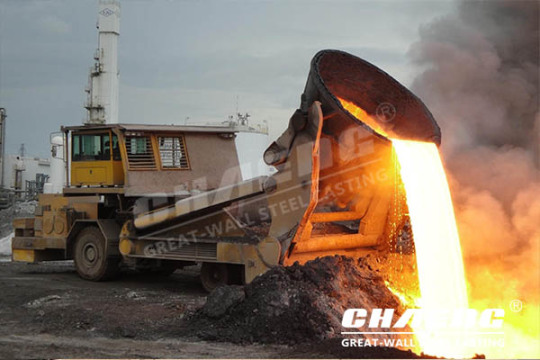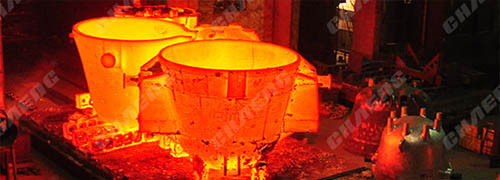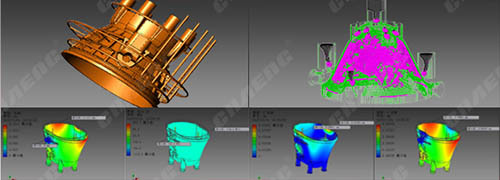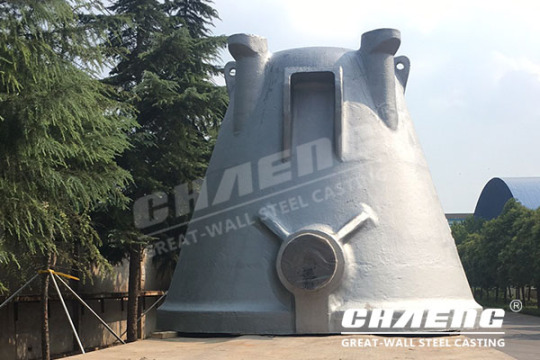#SteelSlag
Explore tagged Tumblr posts
Text
Steel Slag Market Applications Diversify Amid Increasing Focus on Carbon Footprint Reduction in Construction

The steel industry, a cornerstone of modern industrial economies, produces millions of tons of steel every year to meet global demand for construction, automotive, infrastructure, and manufacturing applications. A byproduct of steel production is steel slag, a waste material that is typically formed during the smelting of iron ore. While slag was historically considered a nuisance to be disposed of, it has found new relevance in the market, offering valuable byproducts that serve a variety of industrial purposes. The global steel slag market has evolved significantly in recent decades, driven by growing awareness of its potential applications and increasing environmental regulations.
Understanding Steel Slag and Its Applications
Steel slag is the non-metallic residue left after the separation of molten steel from impurities during the steel-making process. The properties of steel slag can vary depending on the type of steel produced, but it is often composed of calcium silicate, iron oxide, and other elements. Traditionally, steel slag was used as a form of aggregate in road construction and as a substitute for limestone in the production of cement. However, with technological advancements, the applications of steel slag have expanded significantly.
One of the primary uses of steel slag is in the production of cement and concrete, where it serves as a supplementary cementitious material. Steel slag's chemical composition makes it a viable alternative to traditional materials, such as Portland cement, contributing to the production of more durable and sustainable concrete. Additionally, steel slag is increasingly used as a road construction material, as it offers improved performance in terms of strength and longevity when compared to conventional aggregates.
In the agriculture sector, steel slag is used as a soil amendment to improve soil quality. The high calcium content in steel slag can neutralize acidic soils, providing essential nutrients for plant growth. Moreover, the potential of steel slag as a source of rare earth elements, such as vanadium and titanium, has spurred research into its use in high-tech applications, including electronics and energy production.
Market Dynamics and Growth Drivers
The steel slag market has witnessed a steady expansion in recent years, driven by several key factors:
Environmental Regulations: Stringent environmental laws and sustainability goals have encouraged the recycling and reuse of industrial byproducts like steel slag. Governments across the world are increasingly focusing on reducing the environmental impact of industries by promoting the circular economy and incentivizing the use of byproducts in place of virgin materials. Steel slag, being a valuable resource, plays a crucial role in these efforts, reducing the need for landfill space and conserving natural resources.
Construction Industry Demand: As urbanization and infrastructure development projects increase worldwide, there is a growing demand for construction materials. Steel slag’s versatility as an aggregate in road construction, concrete, and asphalt has positioned it as an essential material in the construction industry. With sustainable construction practices gaining traction, steel slag is increasingly being seen as a green alternative to traditional materials.
Technological Innovations: Advances in processing technologies have enabled the extraction of more valuable components from steel slag, such as rare earth elements. These innovations have opened new markets for steel slag, especially in high-tech industries. As demand for rare earth metals rises, steel slag could become an important secondary source of these materials.
Cost Efficiency: Steel slag is often more cost-effective than natural aggregates or traditional materials used in construction and manufacturing. The availability of slag from steel production plants makes it an attractive option for industries looking to reduce material costs without compromising on quality.
Challenges Facing the Steel Slag Market
Despite its potential, the steel slag market faces several challenges that could hinder its growth:
Health and Environmental Concerns: Although steel slag is a valuable byproduct, its use has raised concerns regarding its potential leachability of harmful elements, such as heavy metals, into the environment. Proper processing and treatment are required to ensure that steel slag does not pose any long-term risks to human health or the ecosystem. Addressing these concerns through effective recycling and treatment processes is crucial for the sustained growth of the market.
Inconsistent Quality: The chemical composition of steel slag can vary significantly depending on the type of steel being produced. This inconsistency can make it difficult to standardize its use in certain applications, particularly in construction and agriculture, where specific material properties are essential. As a result, there is a need for more research into standardizing steel slag processing methods.
Competition from Alternative Materials: Despite the growing interest in steel slag, it faces competition from other recycled materials, such as fly ash and bottom ash, which are also used in construction and cement production. These materials may sometimes offer more consistent properties or lower processing costs, limiting the market share of steel slag.
Future Outlook
Looking ahead, the steel slag market is poised for growth, driven by the continued demand for sustainable materials, regulatory support for recycling initiatives, and advances in technology. As industries across the world continue to focus on reducing waste and conserving natural resources, the role of steel slag in the circular economy will only become more prominent.
Technological innovations, particularly in the extraction of rare earth elements and the development of advanced processing techniques, will likely open new avenues for steel slag’s use in high-value applications. In parallel, the global push for more sustainable construction practices will provide a long-term growth opportunity for steel slag in infrastructure development.
In conclusion, while the steel slag market faces challenges, its potential to serve as a sustainable and cost-effective material in various industries makes it a valuable asset in the modern industrial landscape. With ongoing advancements and increasing adoption of circular economy principles, the market for steel slag is expected to continue expanding in the coming years.
0 notes
Note
Hey so im here about your AU. Whats it about? Whos the main spectacle, if there are any? Got any posts about it? Love to hear it xx
-maxie
Heyyyy, sorry for not answering. Basically, it's about the discussion on how functionism and colonial quintessorian repression still affects the average bot even when both were extincted eons ago. As such, I decided to take an look in the "younger" bots (Team Hot Rod/Springer/Magnus) as the "team Earth" versus a new team of Decepticons (maybe I'll post abt them in october and ellaborate on them more), later both teams ends up allying themselves against the threat of a new Quintessorian colonial regime on Cybertron.
Because the Roddy Team itself is REALLY (on purpose) dysfunctional, I (lovingly) call it my Unhinged Team Earth, the members are: Rodimus, Perceptor, Springer, Mirage, Tracks, Ultra Magnus (he doesn't go to Earth at first), Sides and Sunny, Cliffjumper and Steelslag (my OC), with the focus itself being on Rodimus and Springer (they are younger than their common apparitions) trying to handle leadership and the diplomatic incidents of a post-apocalyptic Earth and the strange sygnals they get from the planet while trying to protect the Allspark firstly from Con's hands and later from the Quint's hands. Some other bots, like Wreck-Gar, Misfire and others bundle up themselves later to fight the Quint's threat when shit hits the fan harder than it already hits commonly.
Here I don't post a lot abt it bc I'm still tidying my notes and trying to make the concepts and the heights and lore explanations, probably after my exams (late december) I'll try to take a hold of it and treat it more seriously!!
#transformers#transformers au#long text#Gonna call it Unhinged Team Earth AU for shits and giggles#Unhinged Team Earth AU
1 note
·
View note
Text

#Steel#Slag Road#steelslagroad#road#india#surat#steelslag#haziraindustrial#upsc#cse#whyinnews#carbon#pollution
0 notes
Photo




Slag pot is an important device in steel making. It is a load-bearing device to collect molten or solid slag generated during metallurgical or chemical processes. The steel mill equipment is a bowl-shaped container with lifting lugs at both sides. A grilling is installed inside the pot, under at least 300mm of the upper surface and divides the inner pot into some pieces. The slag pot that purchased by metallurgical enterprises generally is made by traditional cast process with long manufacturing cycle, short service life, and great scrapped quantity. Chaeng, through continuous technical innovation in production process, makes slag pots that have more advantages such as short cast period, long service life and strong resistance to deformation.
1 note
·
View note